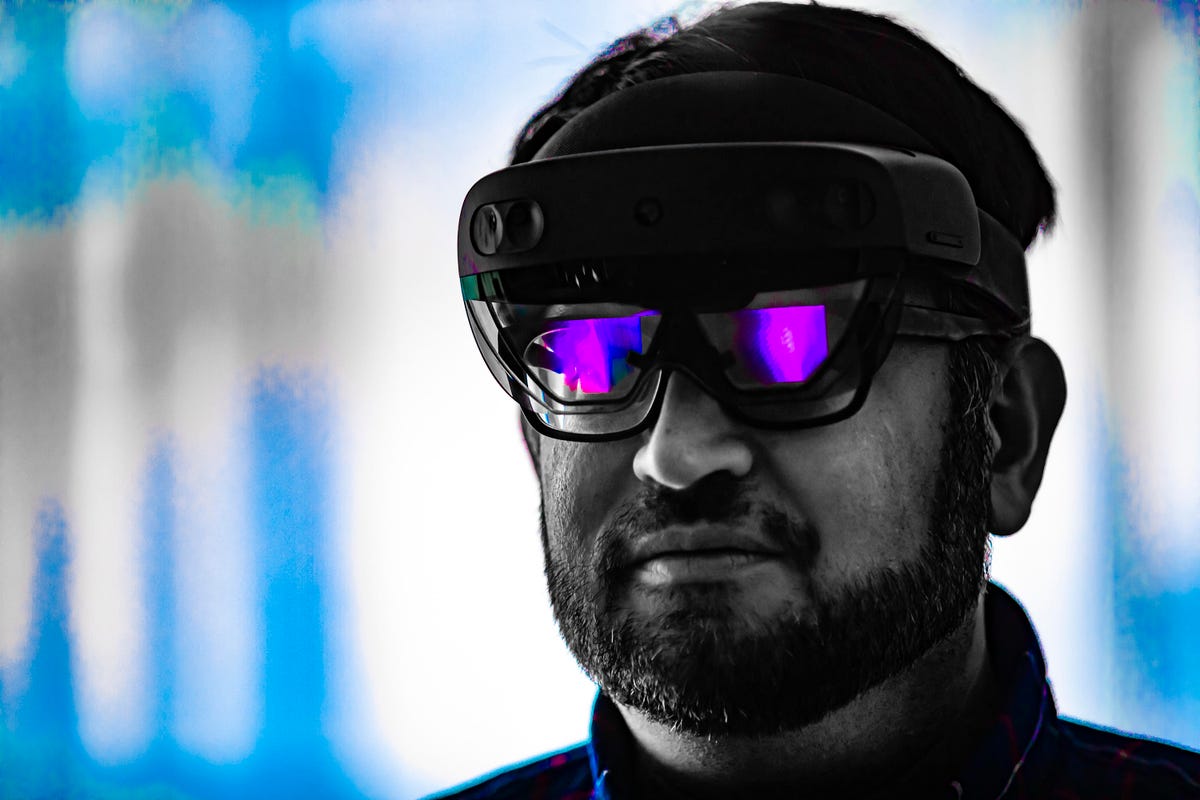
Microsoft's newest mixed reality headset, the HoloLens 2, arrives four years after the first HoloLens was announced in 2015. We visited Redmond, Washington, and tried it Microsoft's headquarters. Here's a close-up look at the $3,500 device.
HoloLens 2 is meant for enterprise, and isn't a consumer gadget. The new headset is still standalone, and doesn't need any extra hip packs or PCs. It now runs of a Qualcomm Snapdragon 850 processor and Microsoft's AI chips.
The key differences are a larger field of view so 3D objects stay in view over a larger area, plus improved hand tracking and a better, more comfortable fit.
It's slightly less heavy than before (566 grams versus 579 grams), but feels lighter because it's rebalanced and made less bulky. A side view shows how compact it is.
The HoloLens 2 runs Windows 10, and relies on a new suite of Microsoft cloud apps with aims to eventually be able to render graphics and location more accurately. But this isn't a 5G device: it relies on Wi-Fi.
Added eye tracking can now notice eye movements, and can let anyone wearing it select an object without even moving their head. The headset can also use iris recognition to securely log users in via Windows Hello.
The back is where most of the processing and battery is kept. Spatial audio works without headphones.
The visor flips up this time, like Microsoft's VR headsets. It's almost like a welder's helmet, and makes keeping it on easier.
We tried it, and it's easy to flip up and walk around with it like some future visor.
There aren't any physical controllers: The HoloLens 2 still relies on hand gestures and voice controls via Cortana, but hand tracking now recognizes 25 points of articulation per hand, and allows for pinching, pushing or grabbing virtual things.
The tracking's much improved, but there isn't any haptic feedback. Microsoft's Alex Kipman, who led the creation of HoloLens and HoloLens 2, sees haptics as being a key step someday.
The display's expanded field of view is now 52 degrees, which is less than VR headsets, but better than Magic Leap One or the first HoloLens. Virtual things still can feel trapped in a smallish window when you look at them, but it's a far bigger viewing area than the first HoloLens allowed (over twice the viewing area, according to Microsoft). A larger display has the equivalent of a 2K display per eye, but shown at a similar density as the first HoloLens, 47 pixels per degree.
The internal parts of HoloLens 2, exploded out at Microsoft's headquarters for us to peek at.
Here's the HoloLens 2's depth-sensing camera array, which is also used in a new cloud-connected Azure Kinect meant for businesses and IoT.
This is a wide-angle view wearing HoloLens 2, but you can see what's really great about it: it fits over glasses, even thick ones. Eye tracking works perfectly with glasses, too. That's a rarity in AR headsets.
While HoloLens 2 is made for enterprises and those that can afford a $3,500 headset, Microsoft plans on these eventually being for everyone. But that day still isn't here... for Microsoft, at least.
The HoloLens 2 is made to share its holographic content with iOS and Android via a suite of apps, so that people on phones and tablets could collaborate, too. That and the HoloLens 2's emphasis on the cloud shows that AR needs to keep being well distributed beyond a single device.
Microsoft Technical Fellow Alex Kipman, sporting the HoloLens 2. Kipman led creation of both the HoloLens and Kinect. For more on our visit to try the headset, read our story on what we experienced in Redmond.

